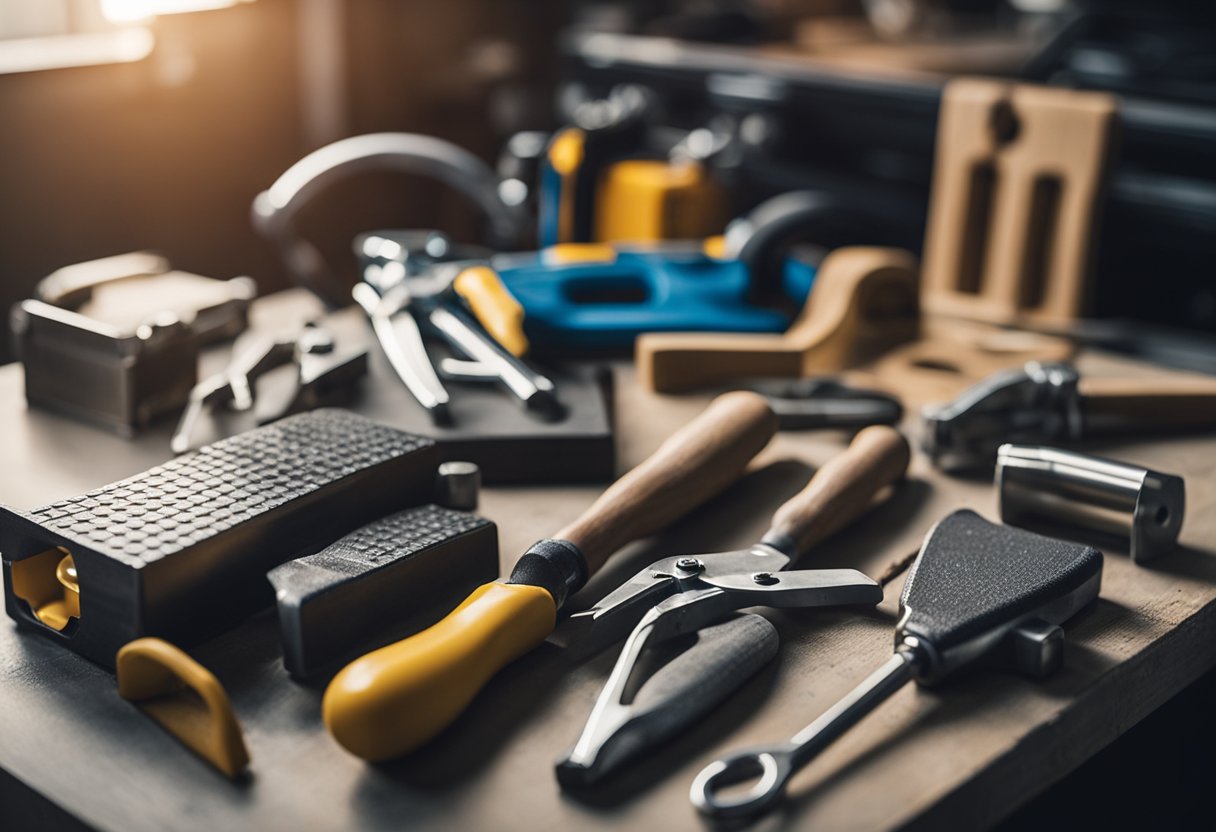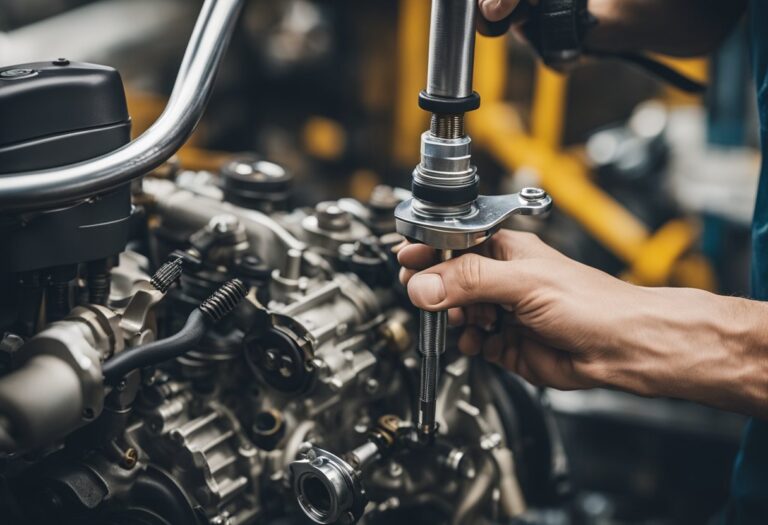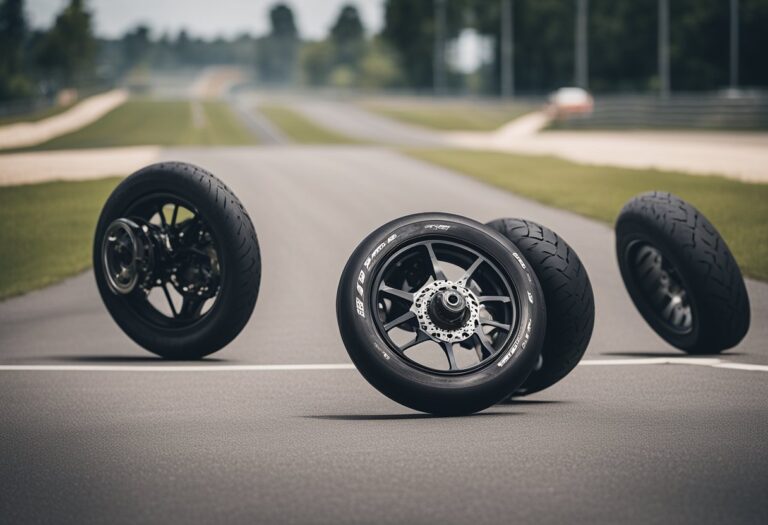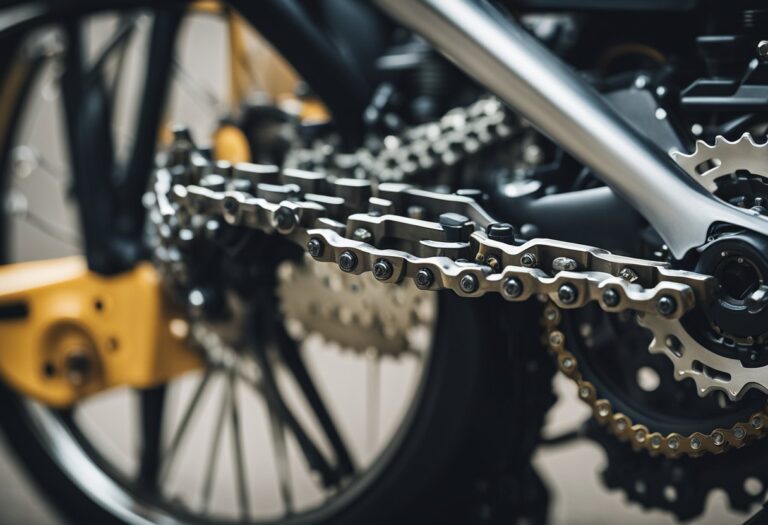How to Fix Minor Dents and Dings: A Comprehensive Guide
Minor dents and dings on your car can be frustrating to look at, but they don’t have to cost a fortune to fix. With a few simple tools and techniques, you can restore your car’s appearance and save money on professional repairs. In this article, we’ll explore the steps you can take to fix minor dents and dings on your own.

Assessing the damage is the first step in fixing minor dents and dings. Depending on the size and location of the damage, you may be able to fix it yourself or you may need to seek professional help. Gathering the necessary tools and preparing your car for dent removal is also important to ensure a successful repair. In the following sections, we’ll outline the techniques you can use to fix dents and dings, as well as some finishing touches and preventive measures to keep your car looking its best.
Key Takeaways
- Assess the damage to determine if you can fix it yourself or need professional help.
- Gathering the necessary tools and preparing your car for dent removal is crucial for a successful repair.
- Techniques such as using a plunger or dry ice can be effective for fixing minor dents and dings.
Assessing the Damage

Identifying Dent Types
Before fixing a dent, it’s important to identify the type of dent. There are three main types of dents: compression, crease, and impact. Compression dents are caused by a force applied to the surface of the car, resulting in a concave shape. Crease dents occur when a force is applied to a small area, causing a sharp, defined line in the metal. Impact dents are caused by an object hitting the car, resulting in a round or oval-shaped dent.
Evaluating Dent Depth
The depth of a dent is another important factor to consider when assessing damage. Shallow dents, such as those caused by hail, can often be repaired using paintless dent repair (PDR) techniques. However, deeper dents may require a more extensive repair process, such as removing the affected panel and using body filler to smooth out the surface.
To evaluate the depth of a dent, use a depth gauge or ruler to measure the depth of the dent. If the depth is less than 1/8 inch, it’s considered a shallow dent and can likely be repaired with PDR. If the depth is greater than 1/8 inch, it may require a more extensive repair process.
By identifying the type of dent and evaluating its depth, you can determine the best course of action for repairing the damage to your car.
Gathering Necessary Tools

Tool Selection for DIY Repair
When it comes to fixing minor dents and dings, having the right tools is essential. Here are some of the tools you’ll need for a DIY repair:
- Plunger: A plunger can be used to pop out small dents.
- Hair dryer: A hair dryer can be used to heat up the metal around the dent, making it easier to pop out.
- Boiling water: Boiling water can also be used to heat up the metal around the dent.
- Rubber mallet: A rubber mallet can be used to gently tap out small dents.
- Dry ice: Dry ice can be used to freeze the metal around the dent, making it easier to pop out.
- Hammer and dolly: A hammer and dolly can be used to shape metal back into place.
- Sandpaper: Sandpaper can be used to smooth out any rough edges.
Professional Dent Repair Kits
If you’re not comfortable doing a DIY repair, there are professional dent repair kits available. These kits come with everything you need to fix minor dents and dings, including:
- Glue gun and glue sticks: These can be used to attach the suction cups to the car.
- Suction cups: These are used to pull the dent out.
- Knockdown tool: This is used to tap down any high spots.
- Pulling bridge: This is used to hold the suction cups in place.
- Dent puller: This is used to pull the dent out.
By using the right tools, you can fix minor dents and dings on your car without having to spend a lot of money at a body shop.
Preparation for Dent Removal

Cleaning the Affected Area
Before attempting to remove a minor dent or ding, it is important to thoroughly clean the affected area. This will help ensure that no dirt or debris interferes with the dent removal process. To clean the area, first, wash the car with soap and water, paying special attention to the area around the dent. Then, use a degreaser to remove any wax or grease that may be present. Finally, wipe the area dry with a clean cloth.
Preparing the Car Surface
Once the affected area is clean, it is important to prepare the car surface for the dent removal process. This involves sanding the area around the dent to create a smooth surface for the dent removal tool to work on. To sand the area, use a fine-grit sandpaper and sand in a circular motion. Be careful not to sand too hard or too long, as this can damage the car’s paint. Once the area is sanded, wipe it down with a clean cloth to remove any dust or debris.
By following these simple steps, you can ensure that your car is properly prepared for the dent removal process. Remember to take your time and be patient, as rushing the process can lead to further damage to your car.
Techniques for Fixing Dents

Using a Plunger
One of the simplest and most effective techniques for fixing minor dents is using a plunger. This method works best on shallow dents that have not caused any paint damage. Here’s how to do it:
- Wet the plunger and the dent area with water.
- Place the plunger over the dent and press it firmly against the surface.
- Pull the plunger towards you to create suction.
- Push and pull the plunger in a steady motion until the dent pops out.
Applying a Glue Puller Kit
A glue puller kit is another effective way to fix minor dents. This method involves using a special glue and a pulling tool to remove the dent. Here’s how to do it:
- Clean the dent area with rubbing alcohol and let it dry.
- Apply the glue to the center of the pulling tool and place it over the dent.
- Wait for the glue to dry and harden.
- Pull the tool in an upward motion to remove the dent.
- Use a plastic scraper to remove any excess glue.
Using a Dent Puller
A dent puller is a tool that uses suction to pull out the dent. This method works best on larger dents that have not caused any paint damage. Here’s how to do it:
- Clean the dent area with rubbing alcohol and let it dry.
- Place the suction cup over the center of the dent.
- Pump the handle of the dent puller to create suction.
- Pull the dent puller in an upward motion to remove the dent.
Remember, these techniques are best used for minor dents and dings. If the dent is too large or has caused paint damage, it’s best to take your vehicle to a professional for repair.
Techniques for Fixing Dings

Using Paintless Dent Repair
One of the most popular techniques for fixing minor dents is paintless dent repair. This method involves manipulating the metal from behind the dent to restore the surface to its original shape. This technique is ideal for small dents that have not caused any damage to the paintwork.
To perform paintless dent repair, a technician will use specialized tools to access the back of the dent. The technician will then gently massage the metal back into place without causing any further damage to the surface. This technique is quick, affordable, and can be completed in just a few hours.
Applying Filler for Deep Dings
For deeper dents, applying filler is often the best solution. Filler is a type of putty that can be applied to the dent to restore the surface to its original shape. This technique is ideal for dents that have caused damage to the paintwork.
To apply filler, the technician will first sand the surface of the dent to create a rough texture. This will help the filler adhere to the surface. The technician will then apply the filler and allow it to dry. Once the filler has hardened, the technician will sand it down to create a smooth surface. The surface can then be painted to match the rest of the car.
Overall, these two techniques are the most effective ways to fix minor dents and dings. Whether you choose paintless dent repair or applying filler, it’s important to choose a reputable technician who has experience in performing these repairs. With the right technique and the right technician, your car can look as good as new in no time.
Finishing Touches

Sanding the Repaired Area
After the dent or ding has been repaired, sanding the area is the next step in achieving a smooth finish. Sandpaper with a fine grit of 320 or higher should be used to sand the repaired area. Make sure to sand in a circular motion to avoid creating scratches or unevenness.
Once the area has been sanded, wipe it clean with a damp cloth to remove any dust or debris.
Painting and Polishing
After sanding, the repaired area is ready for painting. It’s important to use the right type of paint that matches the color of the car. A paint code can be found on the car’s manufacturer label or by contacting the dealership.
Before painting, make sure to apply a primer to the repaired area. This will help the paint adhere properly and prevent any peeling or chipping.
After the primer has dried, apply the paint in thin layers, allowing each layer to dry before applying the next. Once the final layer has been applied, allow it to dry completely before moving on to polishing.
Polishing the repaired area will help to blend it in with the rest of the car’s surface. Apply a small amount of polishing compound to a clean cloth and rub it onto the repaired area in a circular motion. Continue until the repaired area matches the shine and smoothness of the surrounding surface.
By following these steps, minor dents and dings can be easily repaired with a professional-looking finish.
Preventive Measures

Protective Accessories
One of the best ways to prevent minor dents and dings is to use protective accessories. These accessories can be as simple as a car cover or as complex as a full car bra. A car cover will protect your car from hail, bird droppings, and other debris. A full car bra will protect your car’s hood, fenders, and bumper from rocks and other road debris.
Another accessory that can help prevent minor dents and dings is a set of mud flaps. Mud flaps will prevent rocks and other debris from being kicked up by your tires and hitting your car’s body.
Safe Parking Practices
Parking your car in a safe location is another way to prevent minor dents and dings. When parking in a parking lot, try to park away from other cars. This will reduce the risk of someone opening their door and hitting your car.
If you have to park on the street, try to find a spot away from heavy traffic. This will reduce the risk of someone accidentally hitting your car while driving by.
It’s also a good idea to park in a garage or carport if possible. This will protect your car from the elements and reduce the risk of it being hit by other cars or debris.
By using protective accessories and practicing safe parking practices, you can significantly reduce the risk of your car getting minor dents and dings.
Frequently Asked Questions

What is the best method to repair a small dent in a car door?
The best method to repair a small dent in a car door depends on the size and location of the dent. Some common methods include using a plunger, a hairdryer and compressed air, or a DIY dent repair kit. It’s important to note that these methods may not work for every dent, and in some cases, professional repair may be necessary.
Can you effectively fix dents at home, and if so, how?
Yes, it is possible to effectively fix small dents at home using various methods such as a DIY dent repair kit or tools like a plunger or suction cup. However, it’s important to keep in mind that not all dents can be fixed at home, and professional repair may be necessary for larger or more complex dents.
What are the typical costs associated with small dent repairs?
The cost of small dent repairs can vary depending on the size and location of the dent, as well as the method of repair. DIY dent repair kits can cost anywhere from $20 to $100, while professional repair can cost several hundred dollars or more.
How does hot water contribute to fixing a small dent in a car?
Hot water can be used to help expand the metal around a small dent, making it easier to push the dent out from the inside. This method is typically used in combination with other dent repair techniques, such as a plunger or suction cup.
What tools are included in a Small Dent Repair Kit, and how are they used?
A Small Dent Repair Kit typically includes tools such as a suction cup, a dent puller, a glue gun, and glue sticks. These tools are used to pull or push the dent out from the inside of the car. Instructions for use are typically included with the kit.
Are dent pullers effective for small dent repair, and what are the limitations?
Dent pullers can be effective for small dent repair, but their effectiveness depends on the size and location of the dent. Pullers may not be effective for larger or more complex dents, and professional repair may be necessary. It’s important to follow the instructions carefully to avoid causing further damage to the car.





